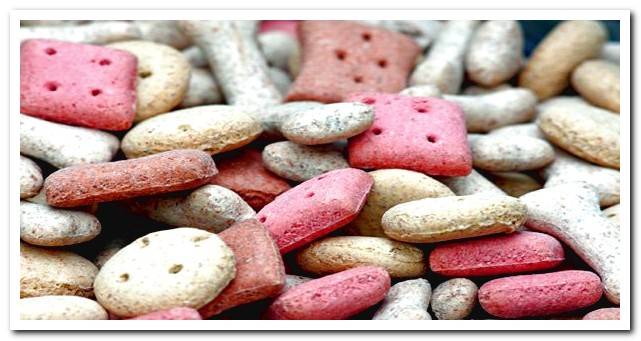
Some health problems in our furry are due to food allergies and intolerances. Is it possible to diagnose them in any way?
This is precisely the function of an exclusion diet for dogs. Take note of the keys that we give you in this article to do it properly.
Index of contents
- 1 What is an exclusion diet?
- 2 What is an exclusion or elimination diet?
- 3 How to make sure it works?
- 4 Examples of an exclusion diet for dogs
What is an exclusion diet?
An exclusion diet is one that reduces the chances of producing some type of allergy in the dog, as it restricts many foods that can pose a problem for the dog.
In this way it can be confirmed if the dog has any type of allergy or intolerance that causes health problems. One of the most common is food allergic dermatitis.
Although there are serological or intradermal tests, veterinaryns often prefer exclusion diets for dogs to detect these types of reactions. The reason is that this method has proven to be one of the most reliable.
What is an exclusion or elimination diet?
As its name suggests, an exclusion diet works by reducing the number of foods with potential allergens.
If we choose this, you must introduce novel proteins into the dog’s diet. That is, those that have never eaten like trout, deer, duck, horse or rabbit protein.
Hydrolyzed proteins are often used in exclusion diets with commercial ranges, which have a minimal risk of producing allergies in dogs.
How to make sure it works?
An exclusion diet may not work if it is not applied properly. Therefore, it is very important to do it correctly. The five keys that you must take into account to achieve this are:
1. Maintain this diet for a minimum of 6 to 8 weeks , which is the time necessary for the dog’s body to eliminate allergenic proteins. After this time, the specialist can assess if there is improvement at the cutaneous and / or gastrointestinal level.
2. You must be clear that, while the dog follows this diet, can only eat hypoallergenic foods. No prizes, no goodies. Neither tartar bars nor medicines or flavored pastes.
3. Don’t fall into the mistake of thinking that a high range of food or home cooking will avoid – with total security – the appearance of allergies. Although it is quality food, it can contain the source food of the problem.
4. Introduce this diet progressively to avoid stomach problems. This will also decrease the chances that the dog will reject new foods.
5. To make sure that the diet definitely works When the symptoms are reduced by 50%, the previous foods must be reintroduced and checked to see if they recur. This will normally occur one week after returning to the previous diet.
If the food allergy is finally confirmed thanks to the exclusion diet, the dog’s diet will have to be definitely modified with a balanced and adequate diet for him.

Examples of an exclusion diet for dogs
If you are worried about not knowing how you are going to apply this exclusion diet on your furry, do not worry. The vet will be able to guide you and recommend some ranges of dog food for this purpose.
You must bear in mind that the exclusion diet is only diagnostic and that for the long term, it should not be maintained. It is convenient to change to a specific diet limited in antigens that strengthens the skin barrier and provides nutrients that reduce inflammation.
The alergies they are a very common problem in dogs And for this reason, many brands already have specific food to help overcome all the problems they cause: foot irritationsl, rashes, hair loss …
Remember: Food is medicine and, therefore, knowing how important it is for the health of your dog, we recommend that you pay close attention to what he eats.
Try to keep food always fresh and varied and to maintain its nutritional properties. On the other hand, avoid giving it processed at high temperatures and with artificially added fats, since they are also much more difficult to digest foods and favor dehydration.
With a proper diet you will not only be able to detect allergies, but also remedy them. In this way, your canine companion will be much happier than he was before discovering his allergy to certain foods.
